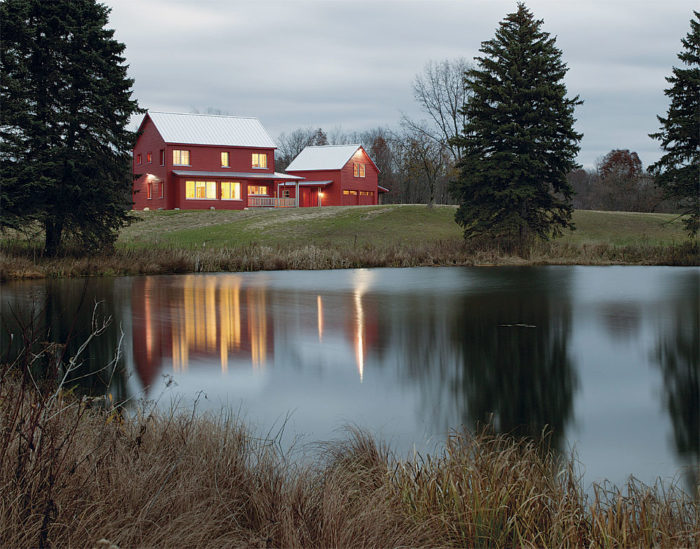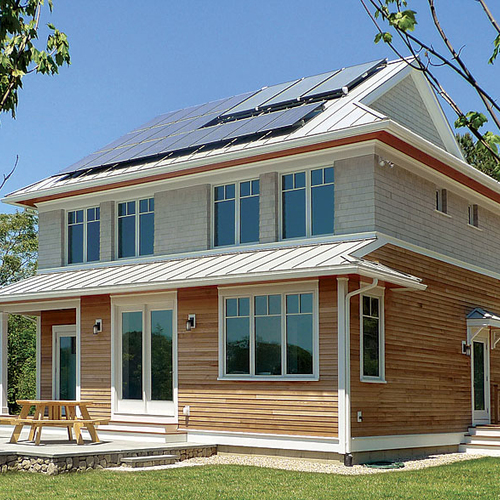
Image Credit: Rob Yagid
I practice architecture in mid-coast Maine, a cold area that can experience some of the country’s most beautiful and most brutal weather. This undoubtedly has had an impact on my approach to design. As an architect, I believe I’m composing a long-term picture of resource consumption, durability, and comfort in the homes I help to create. As a result, I feel it’s my responsibility to be as mindful about the implications of my designs as possible. With this idea at the core of my practice, I use the Passive House performance standard when I can to help achieve what we at my firm believe to be a healthy, comfortable, and highly sustainable home throughout its life span. Over the years, more and more people across the country have found value in the very same logic.
It was not a complete surprise when my good friend Michael Klinger—a certified Passive House consultant, a builder, and the owner of Energy Wise Homes in Michigan—called me to pitch a low-energy project in the rural town of Holly. He had already been working with clients Maura and Kurt, who were passionate about building a certified Passive House on their rolling property.
While Michigan and Maine are a considerable distance apart, both are located in the northern tier of the country, and their climates are very similar. I felt that the designs we’d been working on over the years here in Maine would be ideally suited to the home Maura and Kurt hoped to build.
Early on, we established a goal to work within the local farmhouse style. Our early design meetings led to a plan that would strike a balance between design objectives and budget, while ensuring the construction of a home…
Weekly Newsletter
Get building science and energy efficiency advice, plus special offers, in your inbox.

This article is only available to GBA Prime Members
Sign up for a free trial and get instant access to this article as well as GBA’s complete library of premium articles and construction details.
Start Free TrialAlready a member? Log in















6 Comments
Question
What do the owners do when they're later in years and they cant navigate the stairs?
Response to R. Miller
R. Miller,
I don't see why the situation would be any different for the owners of this house than for the owners of any two-story house. You may have noticed that this house has a ground-floor bedroom and bathroom.
per square foot costs
Does Fine Homebuilding use a standard definition for costs per square foot? For example, a nice, well-designed house like this probably had design fees in the $50 K range. Are design fees included in the stated cost? Landscaping? Cost to bring in utilities? Site prep? fixtures? Appliances?
I ask because it is useful to be able to compare costs from one type of design to another, but there needs to be uniformity as to what is included.
I like the house a lot.
Bump out shed roof?
This is a beautiful house and I love the cut away diagram. These provide answers to so many questions all in one image!
I'm curious how the small roof over the bump out is insulated/air sealed. This isn't shown in the cut away diagram, but it must be different than the main roof assembly.
Crawlspace ceiling height
Whats the height of the crawlspace ceiling height? Looks to be substantial. Looks like a typical basement in a older upper midwestern home. What was the projected use for this space?
Range Ventilation?
Love the thoughtfulness evident in the integration of design (especially local vernacular) and function. Thanks very much for the cut-away drawing and sharing the details.
Two questions:
It looks like the range is not vented at all… is this true?
What does the 1 1/2" of concrete on the joists contribute? What kind of concrete did you use?
Log in or become a member to post a comment.
Sign up Log in